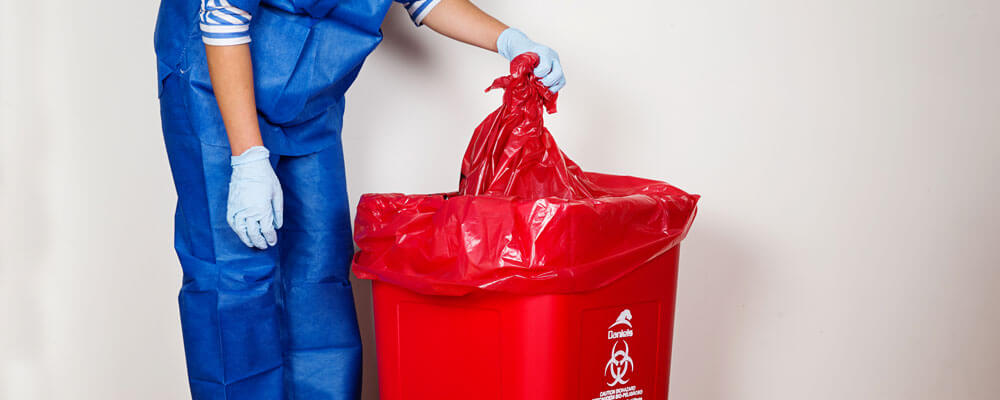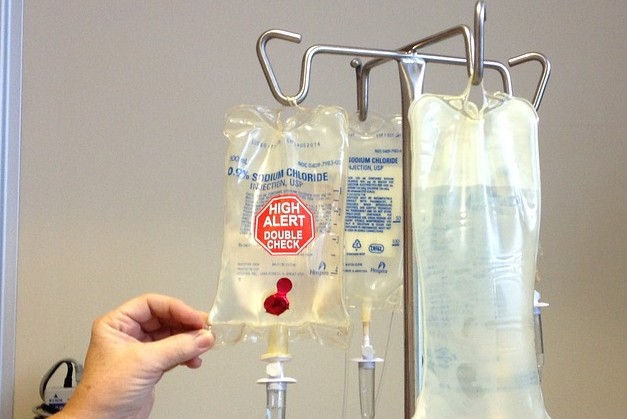Keep Ahead of Rules: Expert Guidance on Medical Garbage Disposal
In a world where the healthcare sector is regularly developing, it is crucial for medical centers to remain ahead of laws when it comes to the appropriate disposal of medical waste. From recognizing the different categories of clinical waste to executing the right collection and partition methods, this conversation will provide workable suggestions and beneficial insights to aid facilities remain ahead of regulations in the ever-changing landscape of medical waste disposal.
Understanding Medical Waste Categories
Recognizing medical waste groups is vital for correct disposal and administration in medical care facilities. Clinical waste describes any kind of waste generated by medical care activities that may posture a risk to public wellness or the environment. It is crucial to categorize medical waste properly to guarantee its safe handling, transportation, disposal, and therapy.
There are a number of groups of medical waste that health care centers require to be knowledgeable about. The most typical classifications consist of infectious waste, pathological waste, sharps waste, pharmaceutical waste, and chemical waste. Each category has particular standards and laws for its proper management and disposal.
Contagious waste consists of products infected with blood or various other physical liquids, such as gloves, gowns, and laboratory cultures. Pathological waste refers to human tissues, organs, or body parts that need special delivery and disposal. Sharps waste consists of made use of needles, syringes, and various other sharp things that can create injury and send infections. Drug waste consists of run out, extra, or infected medicines that require mindful handling and disposal. Chemical waste consists of solvents, disinfectants, and other chemical compounds used in healthcare facilities.
Staying Up-To-Date With Regulatory Modifications
Remaining existing with regulative changes is vital for medical care centers to make sure compliance and appropriate management of clinical garbage disposal. medical waste removal service. With regulations continuously progressing, it is necessary for medical care centers to stay updated to avoid penalties, penalties, and prospective harm to the setting and public health
To remain ahead of regulative adjustments, health care centers ought to establish a system for tracking and monitoring updates. This can be done by signing up for governing e-newsletters, attending workshops and meetings, and proactively taking part in industry organizations. Furthermore, centers ought to assign a personnel or team liable for staying notified and distributing info to appropriate stakeholders.
Regular communication with regulatory companies is also vital. Healthcare facilities must establish connections with regional, state, and government firms to ensure they recognize any type of modifications in guidelines that might influence their waste administration practices. This can be done with normal meetings, participation in public comment durations, and proactive involvement with governing agencies.
Additionally, health care centers must think about partnering with waste administration companies that specialize in medical garbage disposal (medical waste disposal services with WasteX). These firms are often skilled in the current guidelines and can offer guidance and assistance to ensure conformity
Carrying Out Proper Collection and Partition Techniques
To efficiently handle medical garbage disposal, medical care centers should develop correct collection and segregation techniques in accordance with governing guidelines. Applying these approaches guarantees the risk-free handling and disposal of potentially unsafe products, shields the environment, and decreases the risk of injuries and infections to healthcare employees and the basic public.
Appropriate collection and partition techniques involve making use of marked containers and identifying systems. Medical care facilities should provide plainly classified containers for different sorts of clinical waste, such as sharps, transmittable waste, pharmaceutical waste, and non-hazardous waste. These containers must check these guys out be color-coded and plainly significant to stay clear of complication and promote very easy recognition.
Furthermore, healthcare centers ought to train their staff on the correct procedures for collecting and setting apart clinical waste. This consists of enlightening them on the different kinds of waste, the ideal containers to use, and the significance of adhering to laws and standards. Regular training sessions and correspondence course ought to be conducted to guarantee that employee remain up-to-date on best practices.
Moreover, healthcare centers ought to develop a system for regular collection and disposal of medical waste. This might involve partnering with accredited waste management firms that focus on medical garbage disposal. These firms will guarantee that the collected waste is carried and taken care of in conformity with regulative demands.
Choosing the Right Disposal Techniques

Incineration is just one of the most typical and efficient approaches for taking care of specific types of medical waste, such as pathological waste and sharps. It involves the regulated burning of waste at high temperatures, minimizing it to ash. Nevertheless, incineration can release hazardous contaminants into the air and add to air contamination.

Other disposal approaches consist of chemical therapy, microwave therapy, and landfilling. Chemical therapy entails using chemicals to reduce the effects of the waste and sanitize. Microwave treatment makes use of microwave power to heat and disinfect the waste. Landfilling involves burying the waste in a marked land fill area (medical waste disposal services with WasteX). Landfilling needs to be the last hotel due to the potential danger of contamination to soil and groundwater.
Making Certain Conformity With Documentation and Training
After very carefully taking into consideration the suitable disposal techniques for clinical waste, healthcare facilities should make sure conformity with guidelines and lessen environmental influence by implementing effective documents and training procedures. This action is essential in maintaining a risk-free and lasting atmosphere for both healthcare workers and the general public.

Medical care employees that take care of clinical waste needs to obtain proper training on waste partition, managing, and disposal treatments. By supplying detailed training, health care facilities can equip their staff to make informed choices and decrease the threat of inappropriate waste disposal.
Verdict
In verdict, remaining ahead of policies in medical garbage disposal is critical for medical care centers. medical waste removal services. Comprehending the different groups of clinical waste, staying updated with governing modifications, executing proper collection and partition techniques, choosing the ideal disposal techniques, and guaranteeing compliance through documentation and training are all vital actions. By adhering to these standards, medical care companies can successfully get his explanation rid of and manage of clinical waste in a responsible and safe manner
From understanding the different categories of medical waste to executing the best collection and partition approaches, this discussion will certainly offer workable suggestions and useful understandings to aid centers stay in advance of guidelines in the ever-changing landscape of medical waste disposal. - medical waste disposal services with WasteX
The most typical groups consist of contagious waste, pathological waste, sharps waste, pharmaceutical waste, and chemical waste. Medical care facilities need to give clearly classified containers for different types of clinical waste, such as sharps, contagious waste, pharmaceutical waste, and non-hazardous waste. Health care facilities need to develop a comprehensive system to tape and track all elements of clinical waste disposal, consisting of types of waste created, amounts, and disposal methods made use of. Healthcare employees who handle medical waste needs to receive suitable training on waste segregation, managing, and disposal treatments.